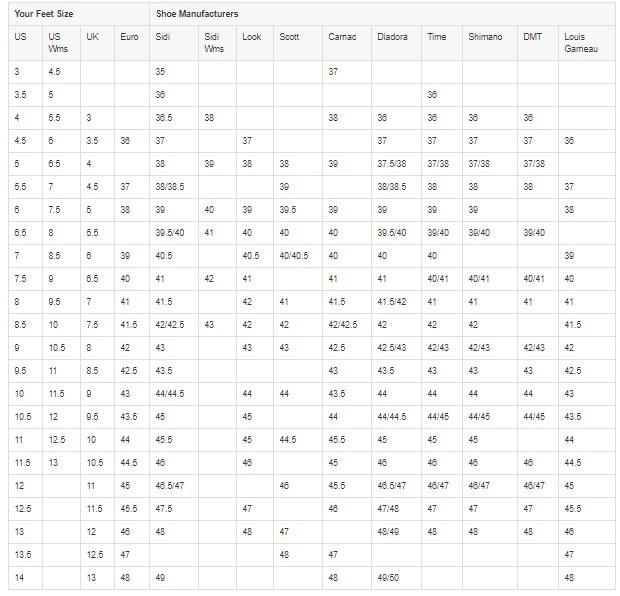Cycling Shoes Size Chart
Whether you’re buying shoes online or from a brick and mortar shop, it’s essential to get the right size of biking shoes. However, it is not as easy as picking a regular pair of everyday shoes. The number of brands and their sizing made it difficult to select among the sea of options. There are a couple of reasons why one will have to take time picking among biking shoe brands.
One, they are mostly in European sizes, and two different brands may have two different sizes equal to one European size. Two is that most are for made for men and that would seem unfair to the women who had taken up biking for sport. There is a way to determine your shoe size for biking shoes easily.
You will also get to see a comparison chart for different shoe manufacturers so that you won’t have to wonder what a Shimano, Pearl, Sidi or a Giro cycling shoe size look like separately.
The right size and fit of a pair of cycling shoes will mean a world of difference than just throwing something on that feels good. Your feet should not be slipping once the cleats are mounted, and you start pedalling. It should have a snug fit, and your toes should not press at the end either.
Other than that, one should also know how to convert sizes correctly. The length of your foot should be sized up in centimetres to make it easier to compare among sized from different brands.
When selecting shoe sizes, there are a few things to consider:
- When shopping for men’s sizes, you can scan among different manufacturers and find that some of them do hold American sizes that stay true to yours. Your size may run from a 7 to 12, and you’ll have no problem fitting into any of them.
- If you’re a woman trying to look for your shoes, don’t worry if all you see are men’s sizes. You can convert men sizes just be deducting 1.5 from your shoe size. If you are a size 7 and you minus 1.5 from that, you’ll get 5.5. You can pick 5.5 from among the various shoes made for men.
- If you want to get the best fit, you can stop relying on numbers and pay attention to how it feels on your feet. Other than the length of the feet, you should also take width into account. Depending on makers from various countries, biking shoes can be either narrower or broader. These types of shoes don’t stretch as much either. Base from how it feels on the first try. Picking one that is too tight will cause discomfort, aches, and poor blood circulation. This will affect pedalling and might hinder you from going the distance you need to take.
How to find your shoe size
- Place a piece of 8” x 11” or 8” x 13” on the floor. Make sure that the edge is against a wall. On the surface of the paper, position your foot and let your toes touch the wall without pressuring them. Be sure that your toes are relaxed to get how much toe room in cycling shoes you should have. From your biggest or tallest toe, draw a line down to your heels or do this the other way around. Push your heel against the wall then draw a line on top of the tallest toe to mark it. Measure the space from the toe down to the heel in centimetres. Sometimes, your left feet would measure different from the right, so it’s better to get both and use the larger as your actual shoe size.
- After measuring the length of your foot, do the width next. You simply need to measure the foot’s circumference. Stay away from shoes that tend to have a narrow design if you have wide feet because this will affect how your feet will feel while it’s moving.
- Check among your choice of brands if they have shoes matching your size. As you may see, the sizes differ among European, and American sizes but as long as you are sure of your size, there is no need to be confused. What matters here is that you’re now confident of which size to get.
Here’s a comparison chart of various cycling shoe brands’ sizes:

